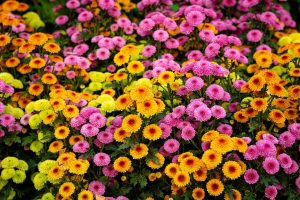In this guide, we’ll explore some exquisite flowering shrubs, detailing their unique characteristics and suitability for various landscapes.
Abelia
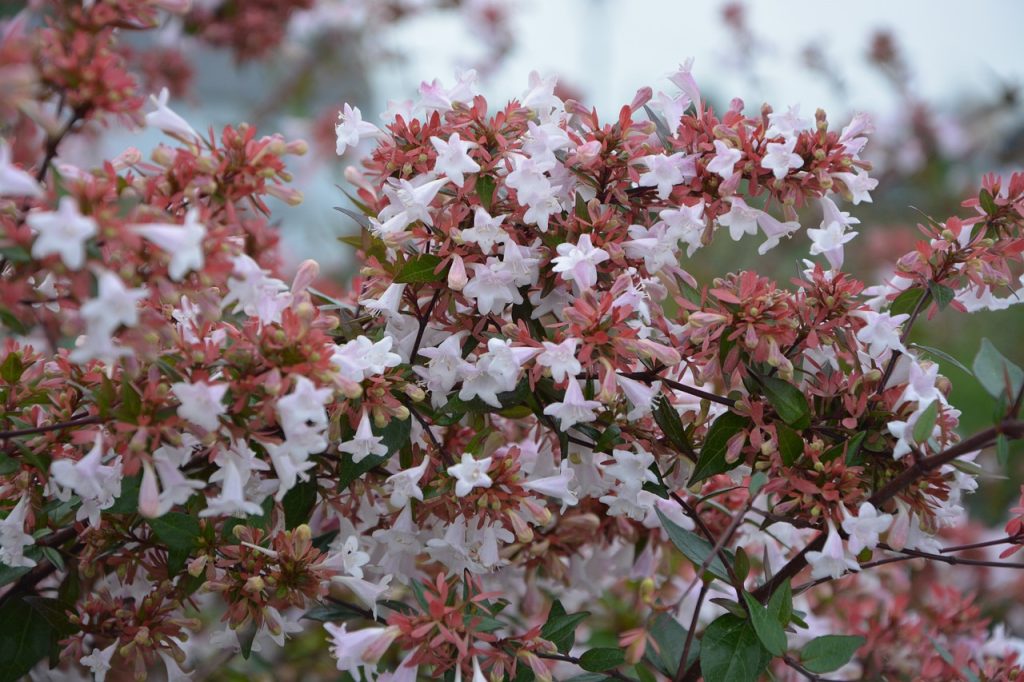
Abelia is a charming shrub known for its glossy leaves and fragrant flowers. It thrives in well-drained soil and prefers full sun, though it can tolerate partial shade. The Abelia x grandiflora variety boasts pink and white flowers that emerge in profusion during the summer, emitting a sweet scent that attracts butterflies and hummingbirds. Thanks to its natural arching habit, Abelia makes an excellent choice for informal borders or as part of a mixed shrub garden. Its foliage takes on a striking bronze hue in the fall, ensuring year-round visual interest.
Andromeda
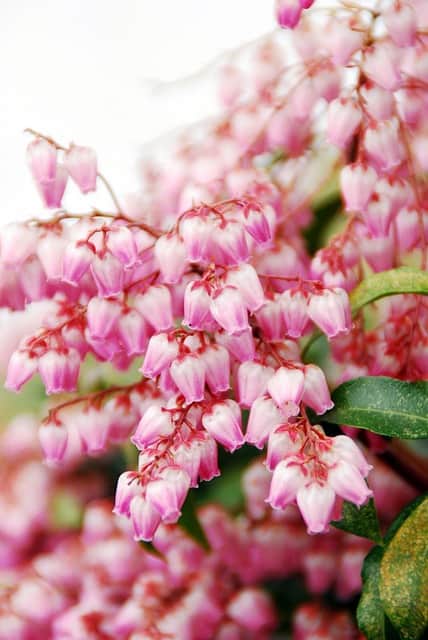
Also known as Pieris japonica, Andromeda is a remarkable shrub that offers breathtaking blossoms and evergreen foliage. It prefers acidic soil, which makes it ideal for those with a North American garden that features other acid-loving plants. This slow-growing shrub produces clusters of bell-shaped flowers, usually in early spring, with colors ranging from white to pink. Its glossy evergreen leaves provide a stunning backdrop year-round, and it is particularly striking in woodland settings or as a foundation plant.
Annabelle

Hydrangea arborescens ‘Annabelle’ is a classic deciduous shrub celebrated for its large, rounded flower clusters. These soft white blooms, often reaching up to 12 inches in diameter, appear in mid-summer and continue to present a delightful sight until frost. Annabelle thrives in partial shade and requires moist, well-drained soil, making it a great addition to shaded or woodland gardens. Not only does it provide a beautiful display, but it’s also a low-maintenance plant, delighting garden enthusiasts of all skill levels.
Apple Serviceberry (Amelanchier arborea)
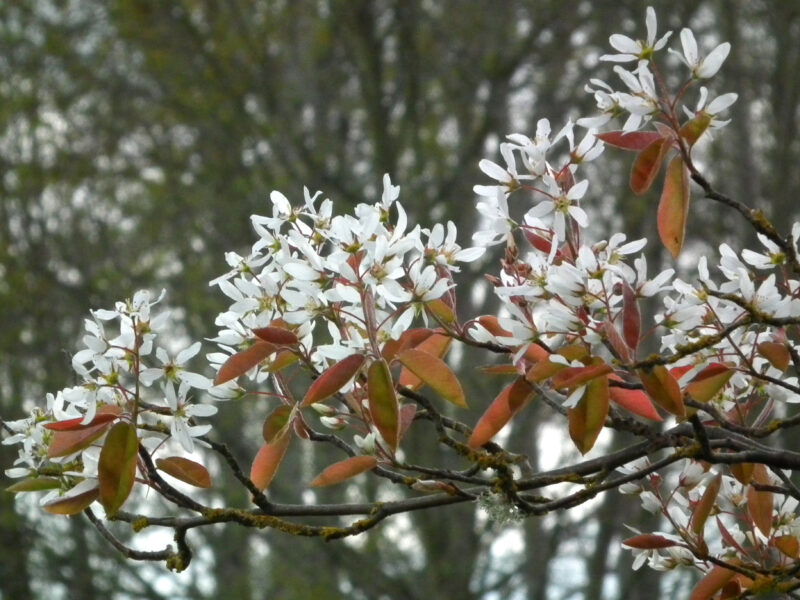
Amelanchier arborea, or Apple Serviceberry, is a deciduous shrub that delights gardeners with its early spring blooms. This shrub offers a stunning display of white flowers just as winter fades, often accompanied by a flush of new foliage. In addition to its lovely spring flowers, Apple Serviceberry bears sweet, edible berries in the summer, which can attract birds and other wildlife. Its stunning fall foliage of reds and oranges further enhances its appeal, making it an excellent choice for any seasonal garden setup.
Arrowwood
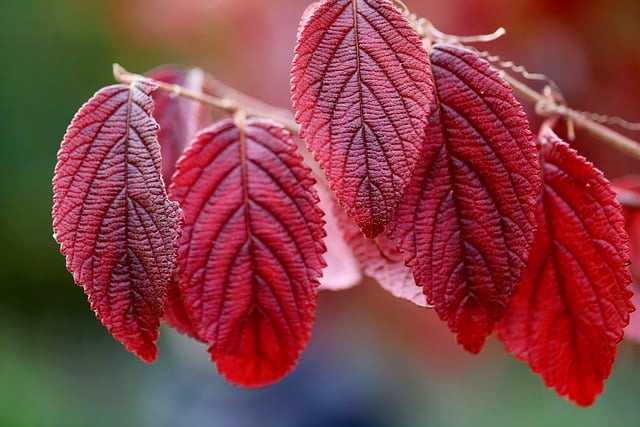
Viburnum dentatum, commonly known as Arrowwood, is a hardy shrub that showcases clusters of white flowers in the spring, giving way to attractive blue-black fruit in summer. This medium to large shrub forms dense thickets, making it a perfect option for natural hedges or privacy screens. Additionally, its glossy green foliage turns a vibrant red in the fall, providing eye-catching seasonal interest. Arrowwood is tolerant of a range of soil types and conditions, further enhancing its desirability for low-maintenance landscaping.
Azalea
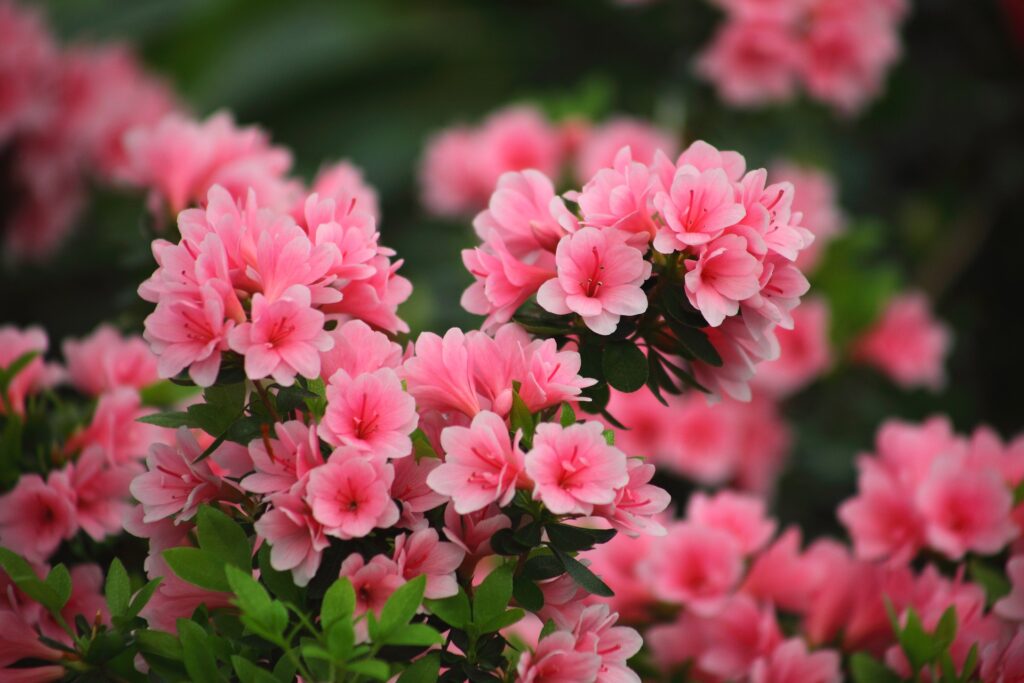
The genus Rhododendron includes azaleas, renowned for their spectacular spring blooms. Available in a wide range of colors—ranging from brilliant reds to soft pinks—these deciduous or evergreen shrubs are perfect for adding vibrant color to your landscape. Azaleas thrive in well-drained, acidic soil and prefer partial shade. They work beautifully in mass plantings or as focal points within garden beds. Plus, their attractive green foliage remains lush throughout the summer, making them a cherished addition to any garden.
Barberry
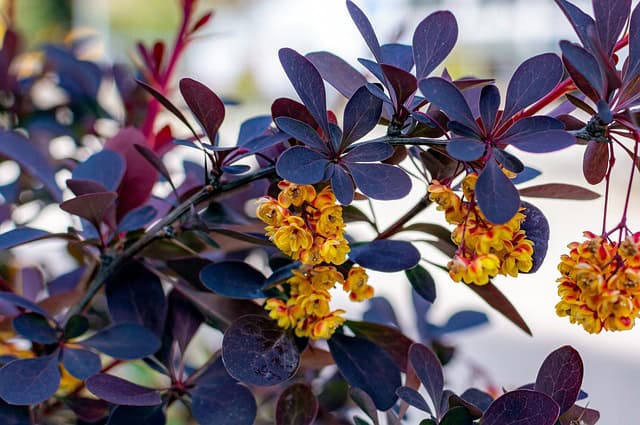
Berberis thunbergii, commonly known as Barberry, offers more than just beautiful flowers; its thorny branches act as a natural deterrent to pests, enhancing security in your landscape. The small yellow flowers bloom in spring, followed by bright red or purple berries in late summer and fall. This deciduous shrub is adaptable to various soil types and thrives in both sunny and partially shaded areas. Barberry’s vibrant foliage creates a striking backdrop against more subdued plants, lending itself beautifully to mixed perennial beds or border plantings.
Beautyberry
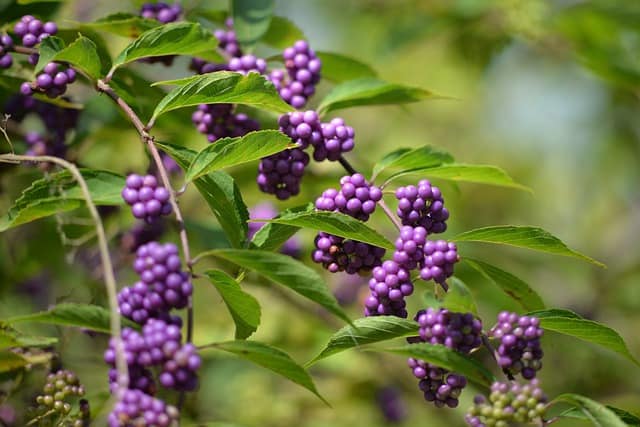
Callicarpa americana, or Beautyberry, comes alive in late summer with clusters of striking purple berries that cling to its branches long after the leaves have fallen. This deciduous shrub boasts small, pale pink flowers in early summer, but it’s the vivid berries that truly steal the show. Beautyberry is a low-maintenance, adaptable plant that thrives in various soil types and lighting conditions, making it an easy choice for any garden. Its unique coloration can provide contrast to traditional flowering shrubs and enhance the landscape with an unexpected twist.
Blue Beard
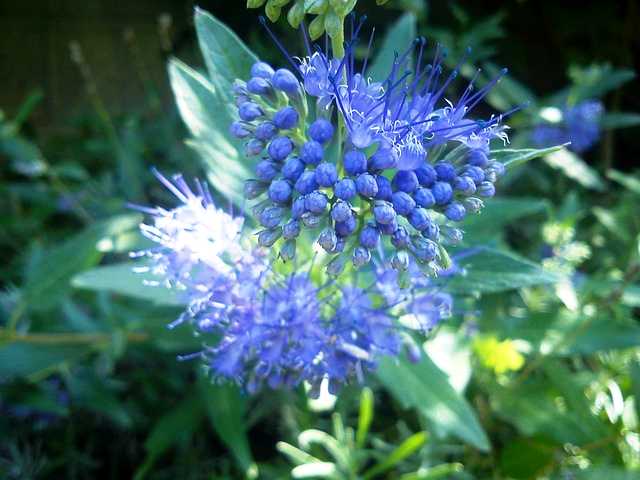
Caryopteris clandonensis, often called Blue Beard or Blue Mist Spiraea, is a perennial shrub that offers stunning blue-purple flowers that bloom in late summer to early fall. Its aromatic leaves emit a pleasant scent, making Blue Beard a favorite among pollinators, especially bees. This drought-tolerant plant prefers full sun and well-draining soil, making it ideal for xeriscaping gardens. Its compact size allows it to fit perfectly in smaller spaces or as part of a mixed flower border, ensuring you enjoy color from late summer into autumn.
Blueberry
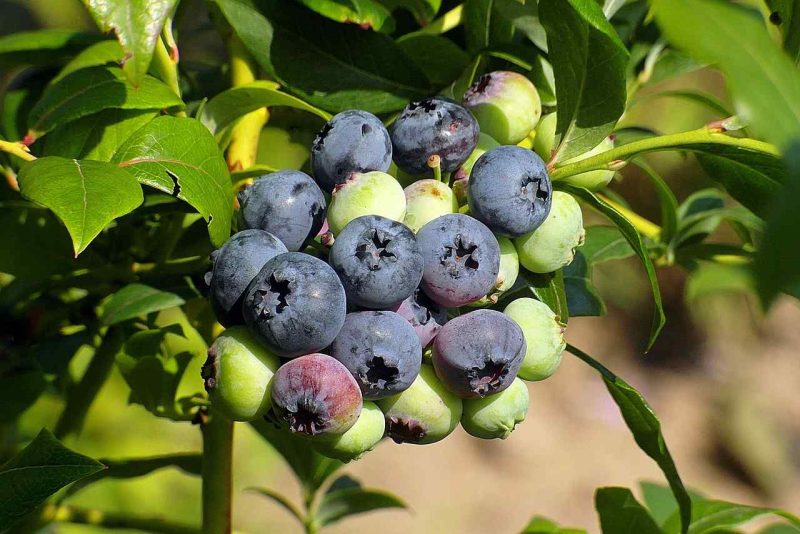
Vaccinium corymbosum, known as Highbush Blueberry, is not only attractive through its delicate white flowers in spring but also yields delicious berries in summer. These deciduous shrubs thrive in acidic soil and require full sun for optimal fruit production. They offer beautiful, smooth green foliage in spring and summer, which transitions to vibrant fall colors. Beyond their beauty, blueberries are a favorite among gardeners for their edible fruit, making them practical and decorative additions to the landscape.
Blue Blossom (Ceanothus)
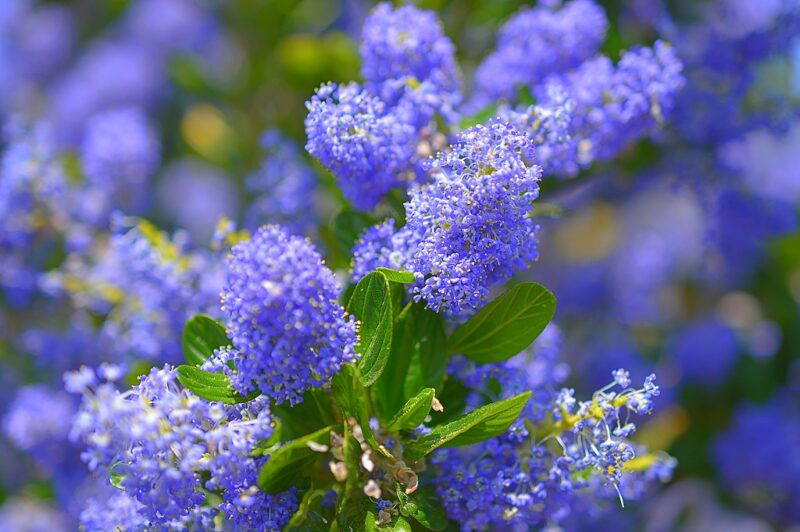
Ceanothus, commonly referred to as Blue Blossom or California Lilac, is a striking shrub that adds a pop of brilliant blue to gardens. This evergreen variety produces fragrant clusters of small blue flowers in spring, attracting butterflies and other pollinators. Blue Blossom thrives in full sun and well-drained soil, making it suitable for drought-resistant gardens. Its dense growth habit works well as a hedge, while it can also be pruned to maintain a desired shape. This stunning shrub brings not only beauty but sustainability to your landscape.
Bougainvillea
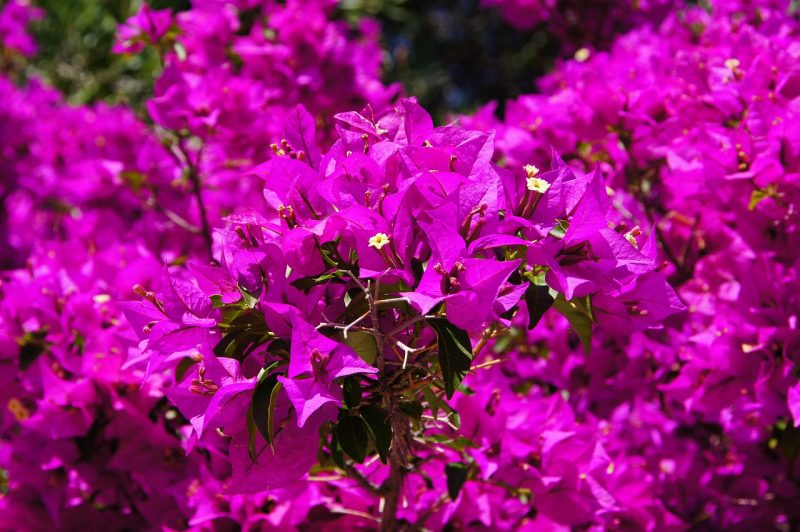
Bougainvillea is a perennial favorite in warmer climates, producing vibrant, papery bracts in shades ranging from magenta to orange, enveloping the true flowers within. These Tropical beauties thrive in full sun and well-draining soil. Although often grown as a vine, Bougainvillea can be trained as a shrub, making it an eye-catching focal point in gardens or patios. The colorful display is both long-lasting and striking, making it a popular choice for creating vibrant landscapes. Bougainvillea is ideal for arid climates and can handle drought once established.
Broom

Cytisus, or Broom, is an eye-catching shrub known for its yellow or white flowers, which bloom profusely throughout late spring. This drought-tolerant plant prefers full sun and well-drained, sandy soil, making it perfect for rock gardens or Mediterranean-style landscapes. Broom’s charming, arching habit adds a natural touch, lending itself effectively to informal landscaping. Although not a traditional flowering shrub, it certainly adds a delightful splash of color without requiring excessive watering or maintenance.
Butterfly Bush
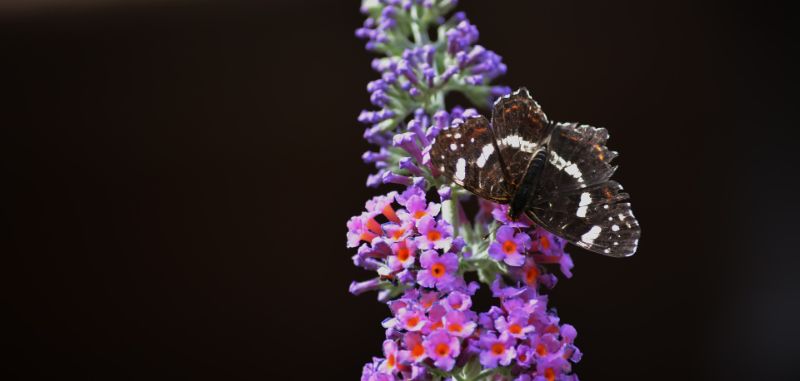
Buddleja davidii, commonly known as Butterfly Bush, is a delightful addition for any pollinator-friendly garden. It produces fragrant, elongated clusters of flowers in shades of purple, pink, and white during summer. This shrub thrives in full sun and well-drained soil, making it excellent for attracting butterflies and hummingbirds. Deer-resistant and drought-tolerant, Butterfly Bush can be used in border plantings, cottage gardens, or informal hedges. Additionally, its showy blooms offer stunning visual appeal, ensuring that your garden is vibrant and alive.
Camellia
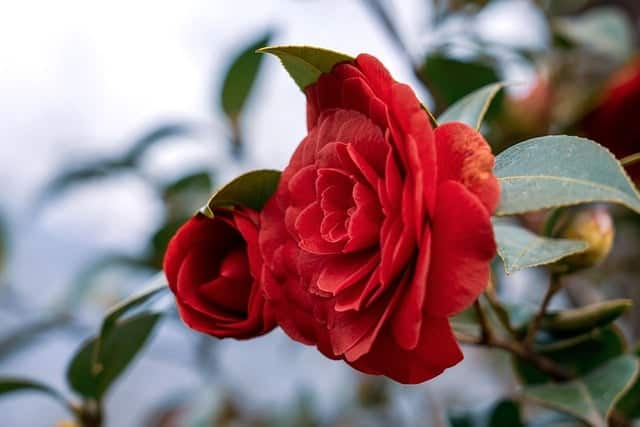
Camellia japonica is renowned for its lush, evergreen leaves and stunning blooms that grace gardens in winter and early spring. With flowers that can range from white to deep red, Camellia adds a touch of elegance and charm to any landscape. Preferring partially shaded environments with well-drained, acidic soil, this shrub is well-suited for garden beds or borders. With proper care, Camellias can flourish and bring an irresistible charm to shaded garden corners or entryways, providing year-round aesthetics.
Carolina Allspice
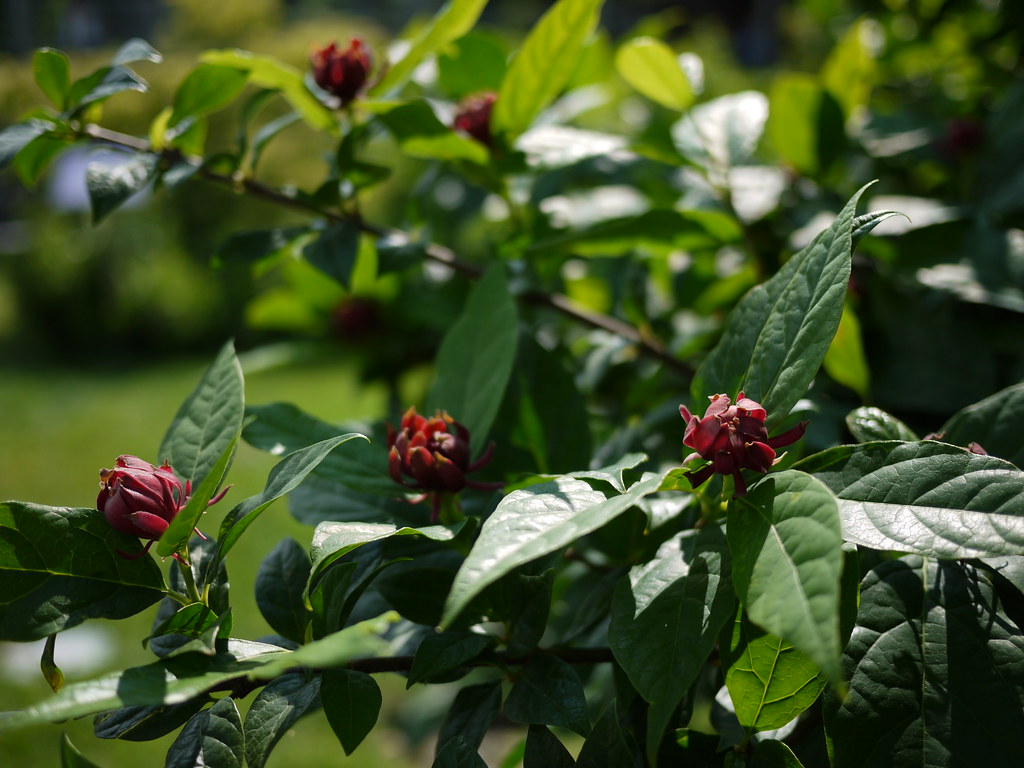
Calycanthus floridus, known as Carolina Allspice or Sweetshrub, is a unique flowering shrub celebrated for its delightful, spicy-scented blossoms. The brownish-red flowers appear from late spring through early summer and often resemble peonies. This adaptable shrub thrives in various soil conditions, preferring partial to full shade. Beyond its aromatic flowers, Carolina Allspice boasts attractive green foliage that turns a lovely yellow in autumn, further enhancing its seasonal appeal. Plant it near pathways or seating areas to enjoy the fragrance while spending time outdoors.
Ceratostigma
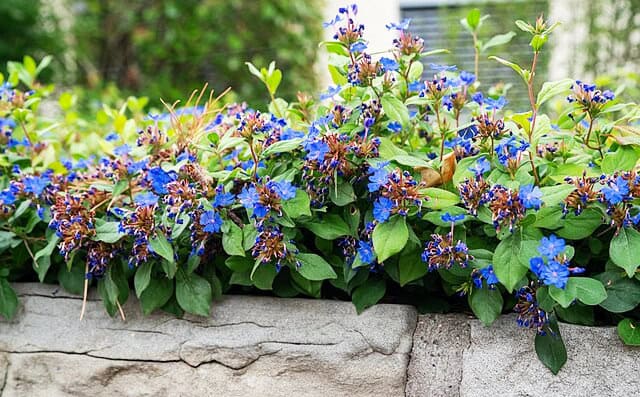
Also known as Blue Plumbago, Ceratostigma willmottianum is a captivating flowering shrub that features clusters of brilliant blue flowers in late summer to early fall. Preferring full sun and well-drained soil, this perennial shrub provides stunning vibrant color when many other plants begin to fade. The foliage offers a deep green hue in the spring and summer, transitioning to red in the fall, enhancing seasonal beauty. Ceratostigma works beautifully in borders, rock gardens, or as ground cover, ensuring a lively garden space that lasts beyond summer.
Chokeberry
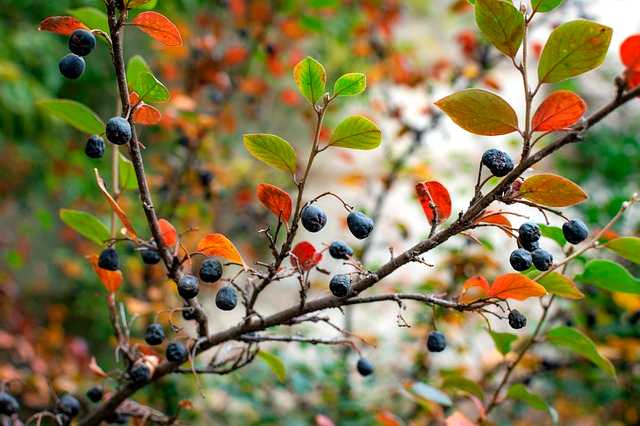
Aronia melanocarpa, commonly referred to as Chokeberry, is a hardy shrub that showcases clusters of white flowers in spring, giving way to small, dark berries in late summer. This adaptable shrub thrives in various soils, and its attractive foliage transforms to vivid reds and oranges in the fall. Beyond its aesthetic appeal, Chokeberry is also beneficial for wildlife, serving as a food source for birds and other animals. Its resilience and low maintenance make it an ideal choice for natural gardens or wildlife-friendly spaces.
Cinquefoil
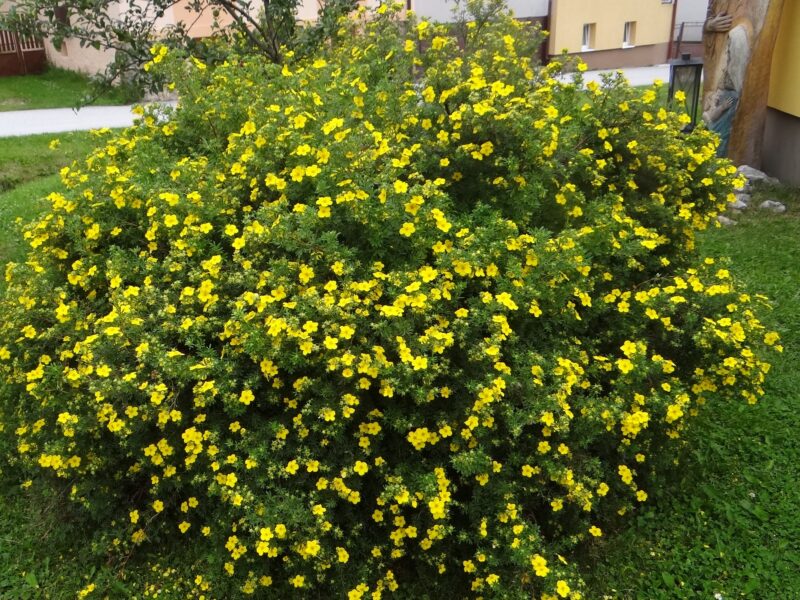
Potentilla fruticosa, known as Cinquefoil or Five-finger, is an incredibly resilient flowering shrub characterized by its small, buttery yellow flowers that brighten up the landscape throughout the summer and fall. Thriving in poor soils and full sun, Cinquefoil is an excellent choice for low-maintenance gardens, including rock gardens and slopes. Its small stature makes it suitable for borders or ground cover, while its lush green foliage offers a pleasing texture against other plants. This hardy shrub brings color and hardiness to any outdoor space.
Common Lilac
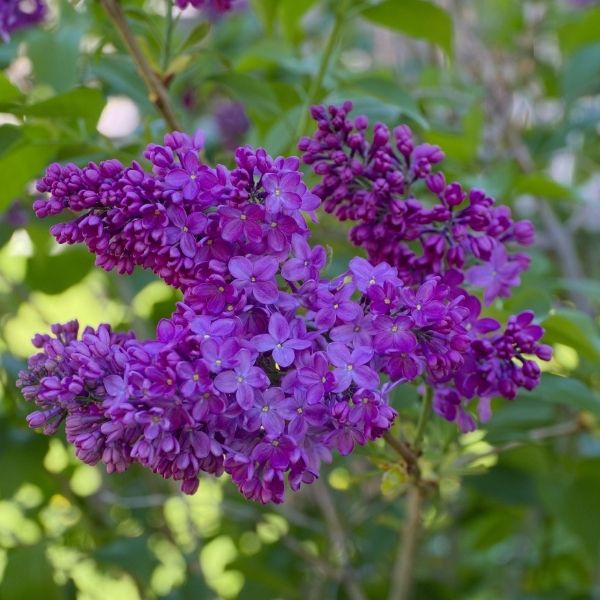
Syringa vulgaris, or Common Lilac, is a beloved perennial shrub celebrated for its intoxicating fragrance and beautiful blooms in spring. With purple, pink, or white flowers, Common Lilac can create a nostalgic and romantic atmosphere in any garden space. Preferring sunny locations with well-drained soil, these shrubs can be shaped into hedges, borders, or even specimen plants. Aside from their delightful scent, these lilacs provide a vibrant pop of color to the landscape, allowing you to enjoy their beauty both visually and aromatically.
Coronilla
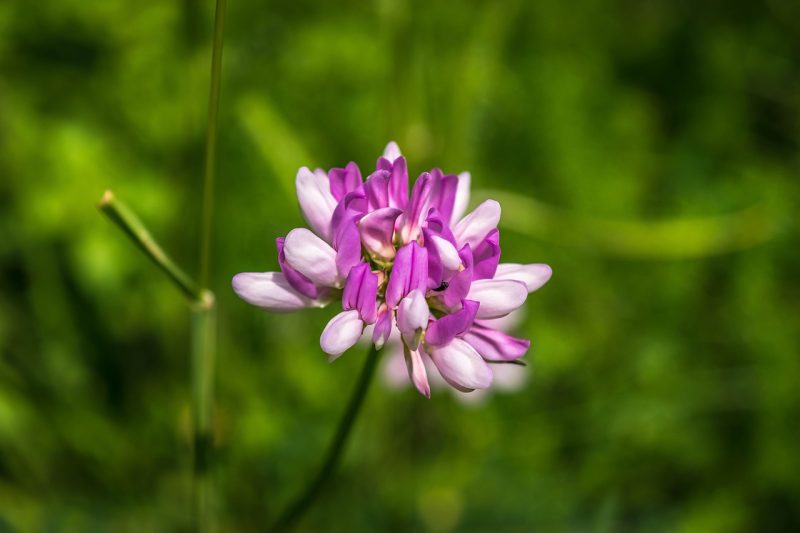
Coronilla glauca, known as the Crown Vetch, is a low-growing evergreen shrub featuring vibrant yellow flowers that bloom in late spring. This drought-tolerant plant thrives in full sun and well-drained soil, making it excellent for rock gardens or low-maintenance spaces. Coronilla is particularly valuable for its ability to improve soil health as a nitrogen-fixing plant. With its unique form and cheerful flowers, it brings joy to landscapes, and it can also help manage erosion on slopes or areas with challenging soil conditions.
Cotoneaster
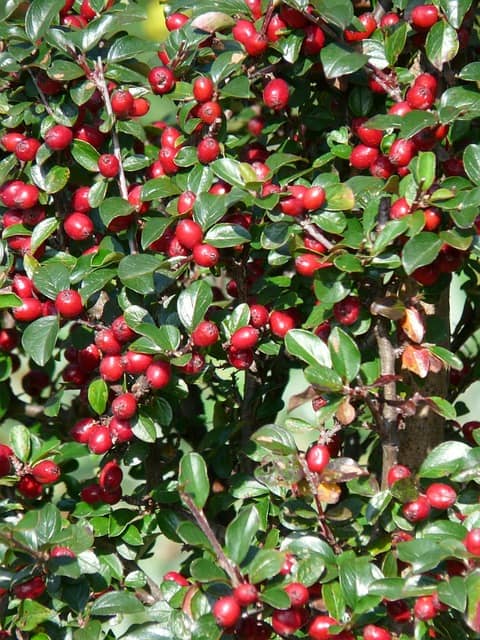
Cotoneaster is a versatile shrub that offers a range of heights and forms, making it suitable for various landscaping needs. Known for its small, fragrant flowers that bloom in late spring, Cotoneaster often bears bright red berries in the fall, providing a feast for birds. These resilient shrubs can adapt to a variety of conditions, thriving in both full sun and partial shade. With its cascading growth habit, Cotoneaster works wonderfully as ground cover, in rock gardens, or as a low-maintenance shrub border.
Daphne
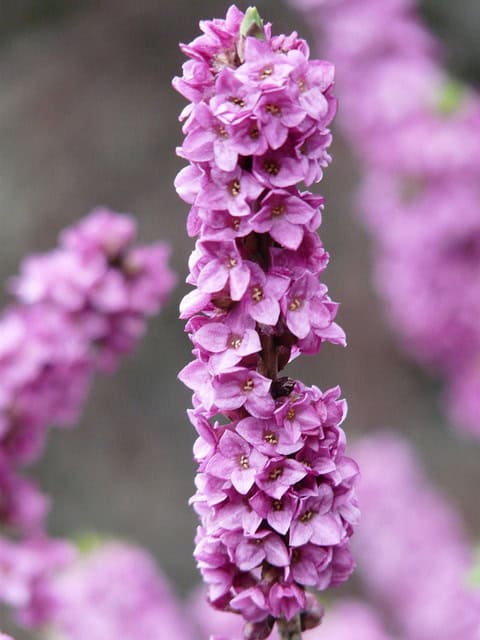
Daphne is a delightful, often-fragrant shrub that captivates gardeners with its exquisite blooms. Known for its creamy-white to pink flowers that unfold in early spring, Daphne offers a lovely scent that fills the garden. This compact shrub prefers well-drained soil and thrives in partially shaded locations, making it perfect for woodland gardens or as a low hedge. Its evergreen foliage provides year-round interest, while its flowering period heralds the arrival of spring, creating a beautiful and aromatic display.
Dappled Willow

The Dappled Willow (Salix integra ‘Hakuro-nishiki’) is a stunning shrub that dazzles with its colorful foliage more than its flowers. Known for its striking variegated leaves adorned with hues of creamy white and pink, this shrub thrives in full sun and moist, well-drained soil. In spring, small, inconspicuous flowers appear, but it’s the dramatic foliage that truly shines throughout the growing season. Dappled Willow makes an eye-catching addition to borders or mixed shrubberies, offering vibrant color and texture even when other plants have finished blooming.
Deutzia
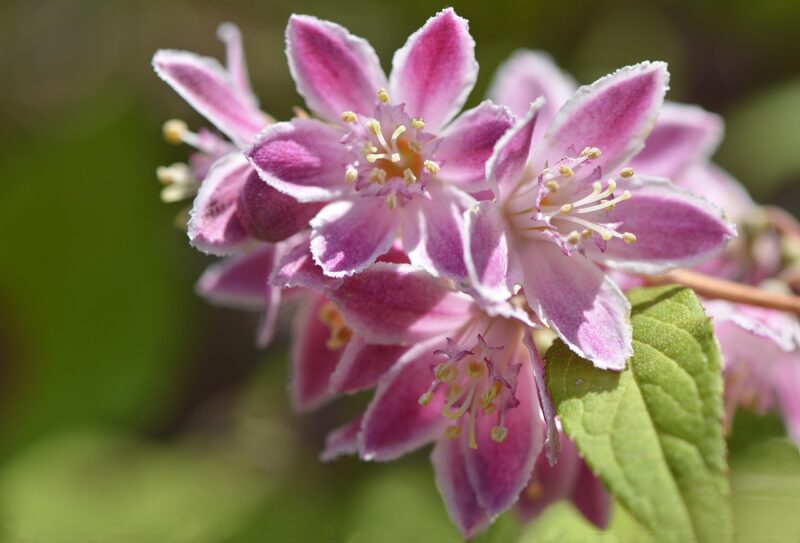
Deutzia is a versatile flowering shrub that provides clusters of charming white or pink star-shaped flowers in late spring. Known for its graceful arching branches, this deciduous shrub prefers well-drained soil and thrives in full sun to partial shade. Deutzia is available in both dwarf and larger varieties, making it adaptable to various garden spaces. Its lush green foliage transitions beautifully in the fall, providing seasonal interest. With its delicate blooms and soft fragrance, Deutzia is ideal for cottage gardens or as a backdrop for perennials.
Dwarf Bottlebrush
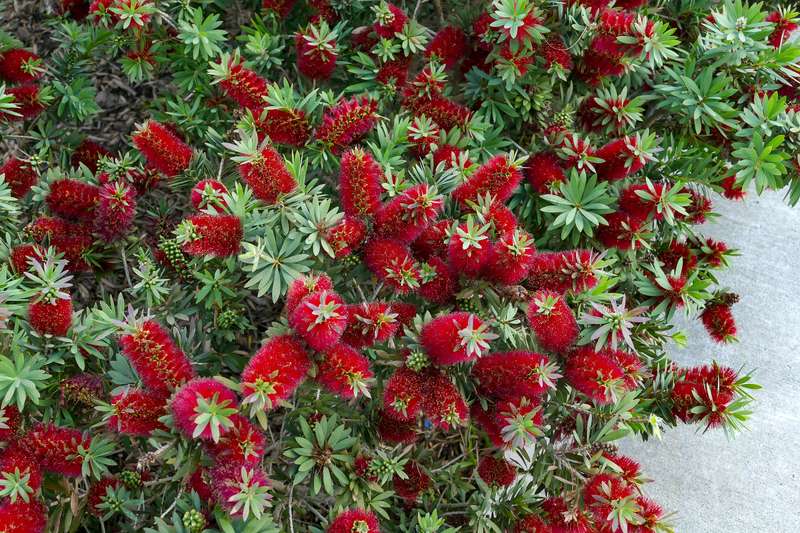
The Dwarf Bottlebrush (Callistemon ‘Little John’) is an exceptional evergreen shrub that displays bright red, fuzzy flower spikes reminiscent of bottle brushes. This compact variety thrives in full sun and well-drained soil, making it an excellent choice for smaller gardens or container use. Dwarf Bottlebrush attracts hummingbirds and bees, lending ecological value to your landscape. Its dense growth habit and glossy foliage create a lovely backdrop, while its vibrant flowers add a punch of color in the late spring and summer.
Dwarf Flowering Almond
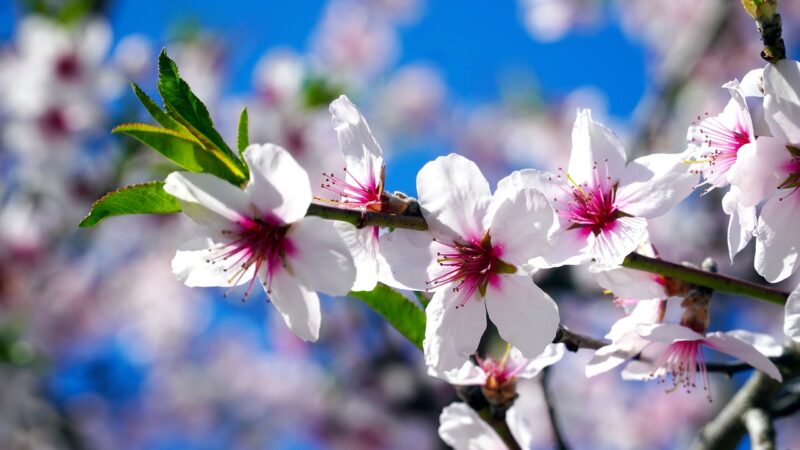
Prunus glandulosa, or the Dwarf Flowering Almond, is a delightful deciduous shrub adored for its abundant, double pink flowers that burst forth in spring. These charming flowers create a stunning display and are perfect for attracting pollinators. Thriving in full sun and well-drained soil, this compact shrub is ideal for small gardens, borders, or as a low-maintenance option in mixed shrub beds. The Dwarf Flowering Almond’s dark green foliage turns an attractive red-orange in the fall, providing year-round appeal.
Elderberry
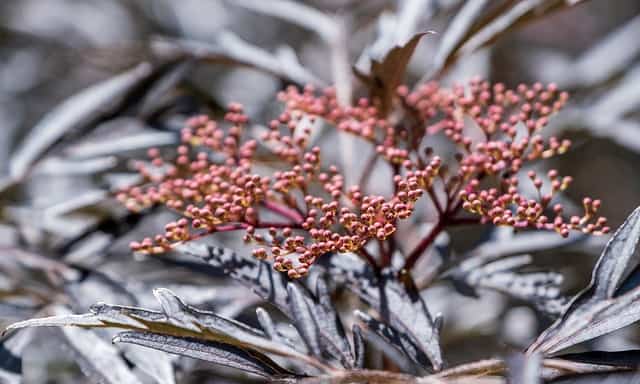
Sambucus nigra, commonly known as Elderberry, is a multifaceted shrub prized not only for its lovely flowers but also for its berries. In late spring, Elderberry produces clusters of white blooms that are highly attractive to butterflies and other pollinators. Following the flowering period, dark purple-black berries develop, which can be harvested for jams, jellies, and wines. Elderberry is adaptable and prefers well-draining soil, thriving in full sun or partial shade. Its striking foliage and seasonal changes enhance the aesthetics of natural gardens or wildlife-friendly landscapes.
Euonymus

Euonymus, available in various species such as Euonymus alatus (Burning Bush), is a popular choice for landscapes due to its colorful foliage and adaptability. The evergreen varieties offer attractive foliage year-round, while deciduous types provide brilliant fall color, turning vibrant shades of orange and red. While Euonymus flowers are generally inconspicuous, its unique coloration makes it a worthy addition to shrub borders or hedges. This resilient shrub thrives in various soil types and conditions, making it a favorite for low-maintenance gardening.
Evergreen Sumac
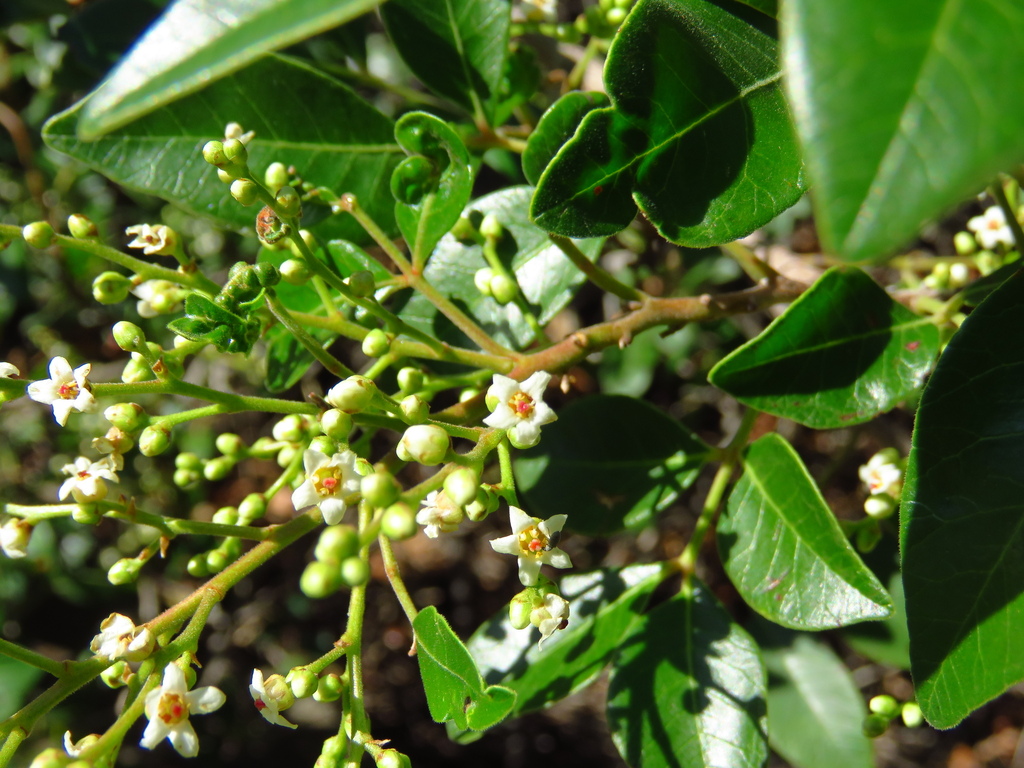
Rhus virens, or Evergreen Sumac, is a drought-tolerant shrub known for its glossy green leaves and fragrant white flowers that bloom in dense clusters during the summer. The flowers are followed by attractive red berries, providing delightful wildlife interactions in your landscape. Evergreen Sumac thrives in full sun and well-drained soil, making it an excellent choice for xeriscaping and low-water landscapes. Its natural, sprawling growth habit lends itself well to informal hedges or naturalistic gardens, creating a lush and inviting environment.
Flowering Currant
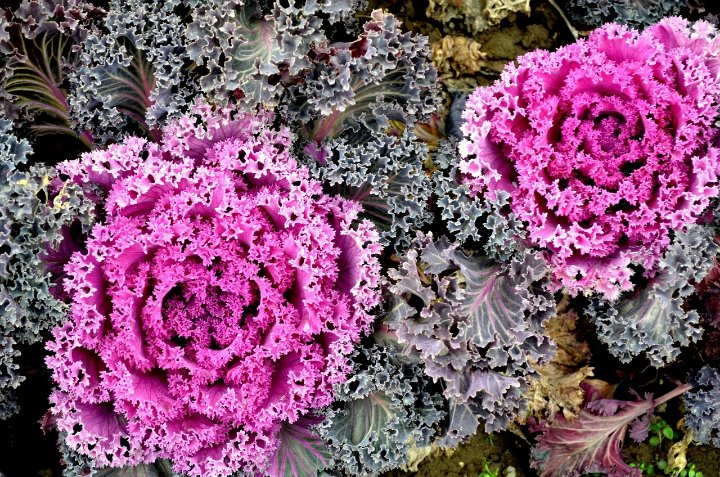
Ribes sanguineum, commonly known as Flowering Currant, is a deciduous shrub renowned for its stunning clusters of pink to red flowers in early spring. These attractive blooms appear before the leaves fully unfold, creating a vibrant contrast against the emerging foliage. Flowering Currant is an excellent choice for attracting bees and hummingbirds, making it an ideal addition to pollinator gardens. It prefers well-drained soil and thrives in full sun to partial shade, making it suited for a range of locations, including borders and woodland gardens.
Flowering Quince
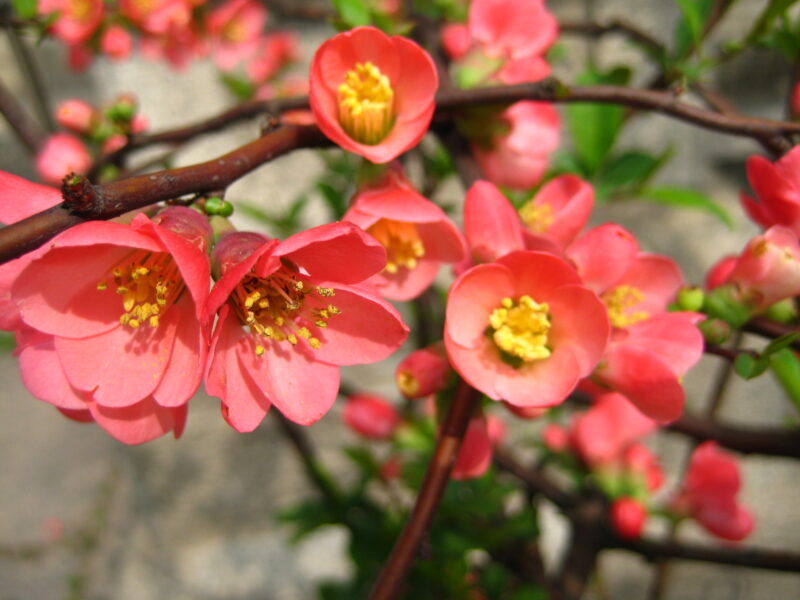
Chaenomeles speciosa, or Flowering Quince, is a hardy shrub well known for its vibrant flowers that bloom in early spring. The bloom colors vary widely, including shades of red, pink, and white. Flowering Quince thrives in well-drained soil with full sun exposure and tolerates poor soil conditions. This shrub is particularly resilient and can be shaped into an informal hedge or used as a specimen plant. Its unique combination of early blooms and attractive fruit in the fall makes Flowering Quince a versatile asset in your landscaped garden.
Forsythia
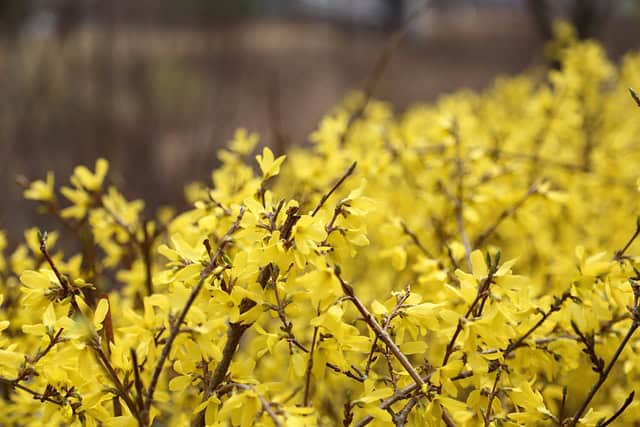
Forsythia is synonymous with spring, heralding the season with its bright yellow flowers that burst forth along its branches before the leaves emerge. This deciduous shrub thrives in well-drained soil and prefers sunny locations. Forsythia is often used as a focal point or informal hedge due to its rapid growth and eye-catching display. Its cheerful blossoms bring joy to gardeners eager for spring’s return, making this shrub a hallmark of seasonal transitions. Additionally, Forsythia is easy to propagate, which can be a rewarding experience for gardeners.
Fringe Flower
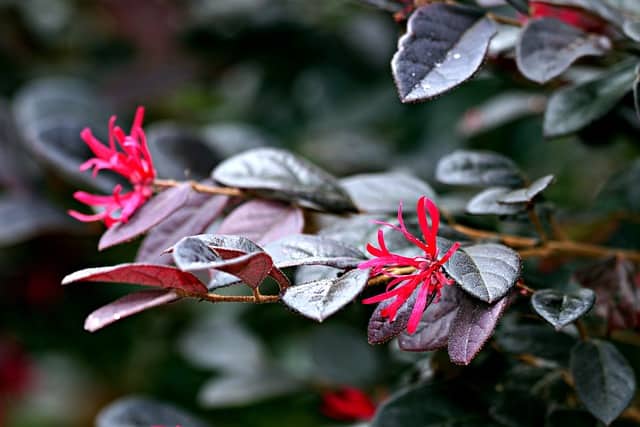
Chorisia speciosa, or the Fringe Flower, is celebrated for its unique, fringed blooms that range from white to pale pink. The flowers appear in spring and can provide a delightful fragrance that attracts pollinators. This deciduous shrub thrives in full sun and well-drained soil and pairs beautifully alongside other spring-flowering plants. The Japanese Fringe Flower, specifically, is an attractive choice for small gardens and borders, showcasing both interesting flower shapes and colorful foliage throughout the seasons.
Fuchsia
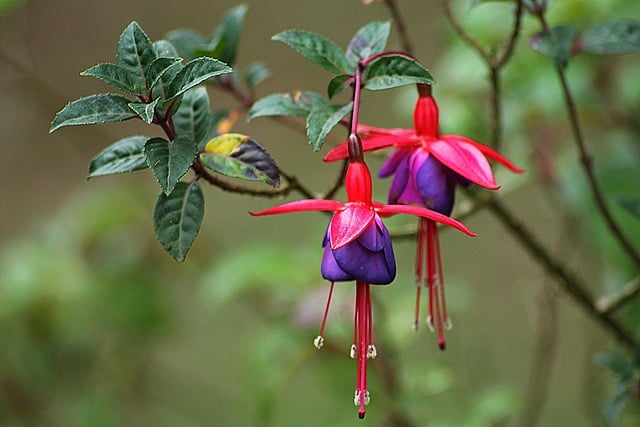
Known for its dazzling pendulous flowers, Fuchsia is a unique and captivating choice for gardeners. While mainly recognized as a container plant, certain hardy varieties can thrive in the ground, displaying beautiful blooms that range in color from vibrant pinks to deep purples and whites. Fuchsia prefers a location with dappled sunlight and well-drained soil, making it ideal for partially shaded areas in the garden. Its attractive blossoms are particularly effective in attracting hummingbirds, enhancing the liveliness of your outdoor space.
Gardenia
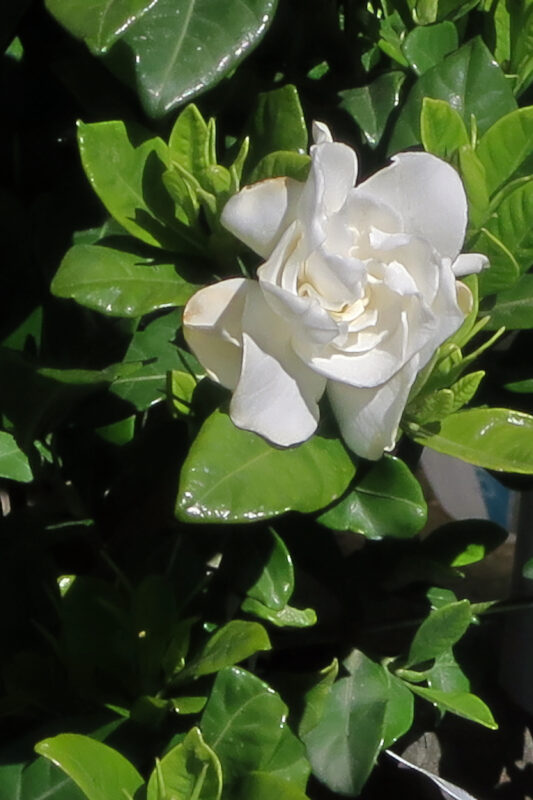
Gardenia jasminoides is a cherished flowering shrub appreciated for its intoxicating fragrance and stunning white blossoms. The creamy flowers, which appear in late spring to early summer, create a luxurious aesthetic and are often used in fragrant displays. Gardenias thrive in well-drained, acidic soil, preferring sunny locations with some afternoon shade. In addition to their striking flowers, the dark green, waxy leaves provide year-round interest. Gardenias make ideal choices for formal gardens, entryways, or patio planters, instantly elevating the sophistication of any landscape.
Hardy Hibiscus
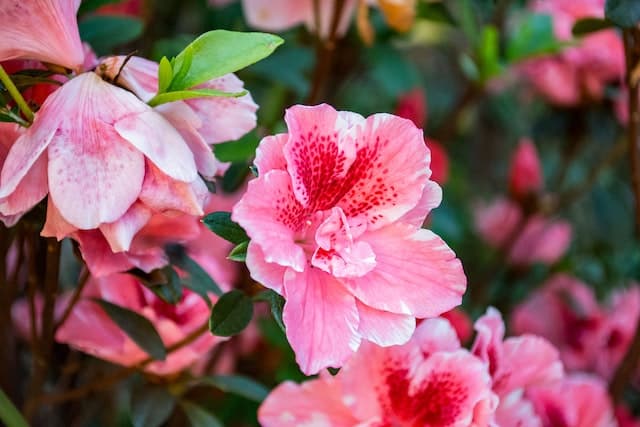
Hardy Hibiscus (Hibiscus moscheutos) is a striking perennial shrub that boasts enormous, exotic flowers resembling those of tropical varieties. With blooms in shades of white, pink, red, and lavender, Hardy Hibiscus will dazzle in mid- to late summer. Preferring full sun and moist soil, this robust shrub can thrive in various garden settings, including borders or as focal points. Hardy Hibiscus is also a great choice for attracting butterflies and hummingbirds, creating a lively atmosphere in your garden.
Honeysuckle
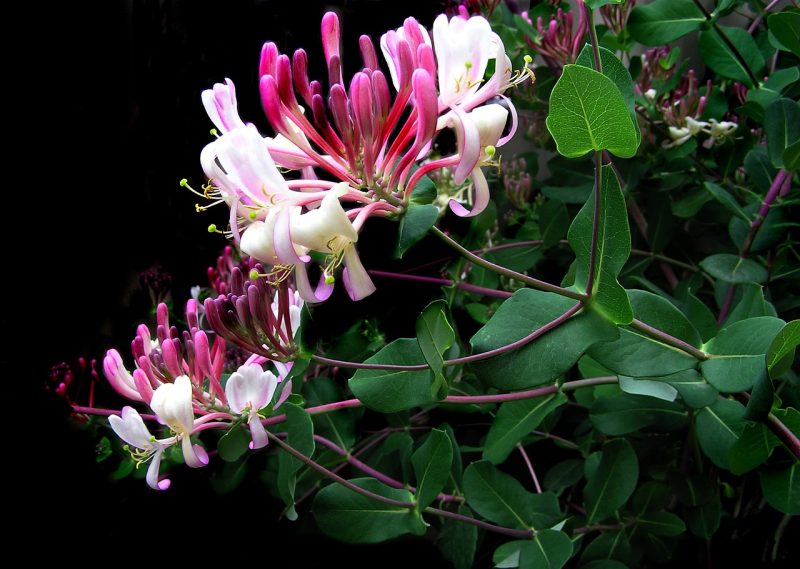
Lonicera spp., commonly known as Honeysuckle, is a diverse group of flowering shrubs and vines that provide exquisite, fragrant blooms throughout the growing season. Their aromatic flowers attract bees, butterflies, and hummingbirds, making them a valuable addition to pollinator gardens. Honeysuckle thrives in full sun and well-drained soil, and its sprawling nature allows it to adapt as a hedge or fence adornment. Not only is Honeysuckle visually appealing, but its sweet fragrance fills the air during summer, adding a sense of enchantment to outdoor spaces.
Hydrangea

Hydrangea is one of the most beloved flowering shrubs, celebrated for its large, beautiful flower clusters. With many varieties available—such as Hydrangea macrophylla (bigleaf hydrangea) and Hydrangea paniculata (panicle hydrangea)—these shrubs can produce blooms in various colors, from vibrant blues to soft pinks and whites. Hydrangeas thrive in well-drained, loamy soil and prefer partial shade to full sun. Their late spring to fall blooms provide a stunning backdrop in any garden, while their impressive foliage offers texture and contrast. Hydrangeas are perfect for borders, containers, or as stunning focal points in garden designs.
Indian Hawthorn
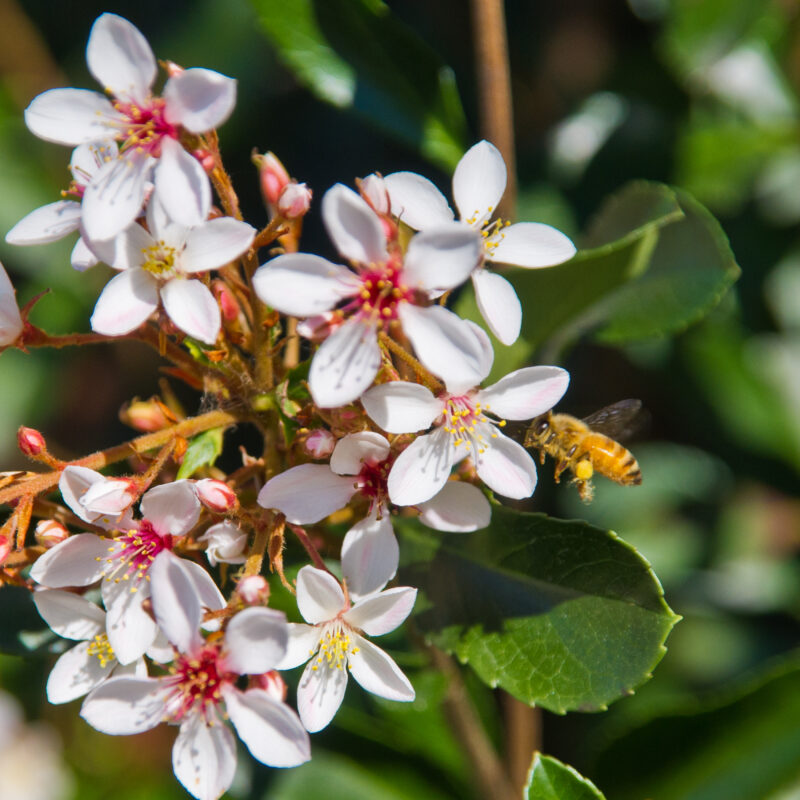
Rhaphiolepis indica, or Indian Hawthorn, is a hardy evergreen shrub appreciated for its glossy leaves and clusters of delicate pink or white flowers that emerge in spring. This low-maintenance shrub thrives in sunny locations with well-drained soil, making it ideal for urban landscapes or coastal gardens. Indian Hawthorn provides year-round greenery and compact growth, making it suitable for mass plantings, foundation plantings, or hedging. Additionally, its resistance to pests and disease ensures a reliable presence in various garden designs.
Japanese Dogwood
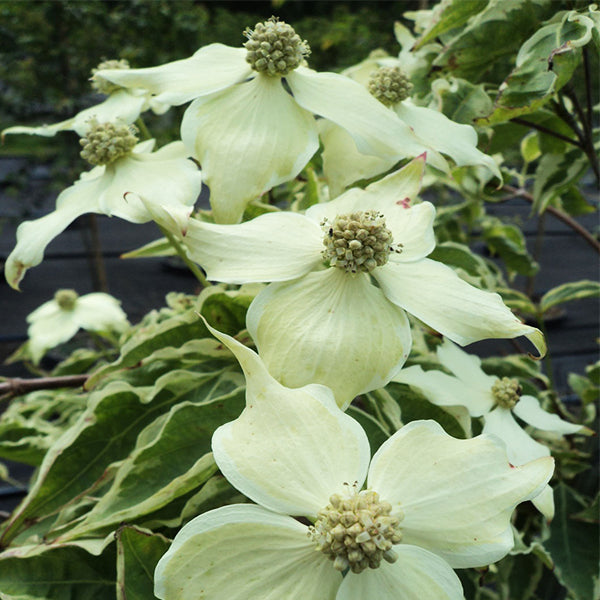
Cornus kousa, or Japanese Dogwood, is a stunning ornamental shrub or small tree that offers impressive flowers. In late spring, this shrub produces unique, white bracts that resemble flowers, providing a beautiful display above its lush green foliage. As summer progresses, it produces small, delicious fruits that attract birds and other wildlife. Japanese Dogwood thrives in well-drained, fertile soil and prefers partial shade to full sun. Its elegant appearance and adaptability make it a captivating addition to any landscape, while its fall foliage presents lovely autumn colors.
Japanese Rose
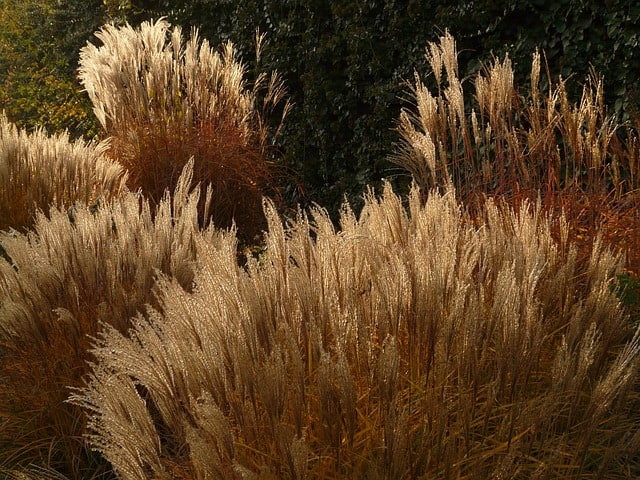
Kerria japonica, commonly known as Japanese Rose, is a resilient shrub that showcases bright yellow, single-petaled flowers in spring. Though primarily prized for its flowers, this deciduous shrub also features charming green foliage that provides vibrancy throughout the growing season. Japanese Rose thrives in well-drained soil and performs best in either full sun or partial shade. Its sprawling growth habit makes it ideal for naturalized spaces, ground cover, or cottage gardens. This low-maintenance plant enhances your landscape with its cheerful blooms and attractive structure.
Korean Spice Viburnum
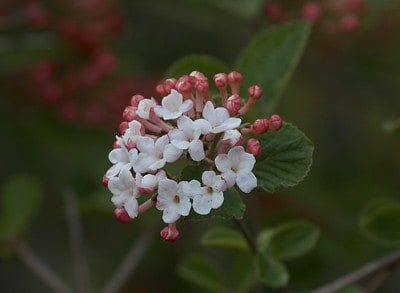
Viburnum carlesii, or Korean Spice Viburnum, is a beloved flowering shrub perfect for adding fragrance to your garden. Boasting clusters of pink to white blooms that appear in mid to late spring, this deciduous shrub is a pollinator magnet. It thrives in well-drained soil and prefers partial shade to full sun, allowing it to adapt to various settings. The aromatic flowers and vibrant fall foliage—turning shades of red and purple—make Korean Spice Viburnum a treasured choice for borders, hedges, or specimen planting, ensuring year-round interest in your landscape.
Lavatera
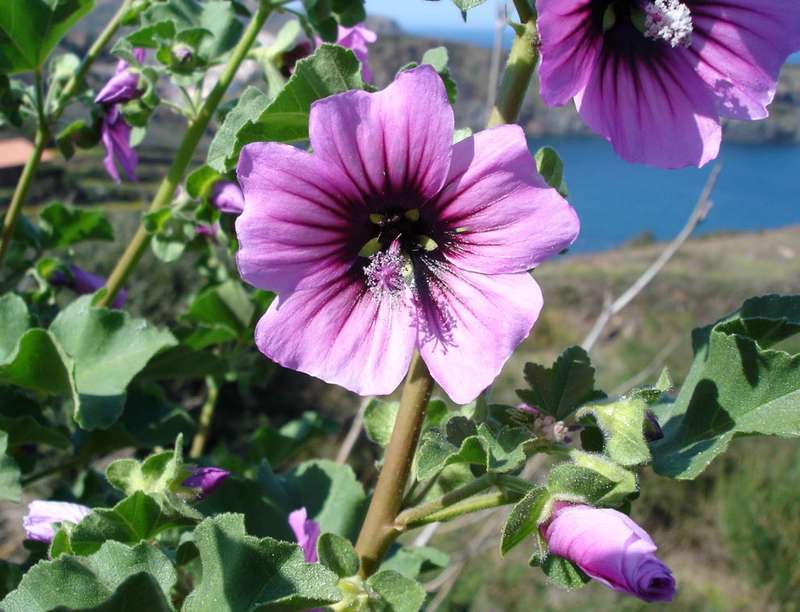
Lavatera, also called Mallow, is a colorful flowering shrub that produces large, vibrant blooms, often in shades of pink, white, and purple. This hardy perennial shrub requires full sun and well-drained soil, making it ideal for sunny garden spots or cottage gardens. Lavatera attracts various pollinators, which enhances the vibrancy of your outdoor space. Its long flowering period from summer to early fall ensures a dynamic display in your landscaping, with delicate blooms that can be used for fresh-cut arrangements as well.
Mahonia
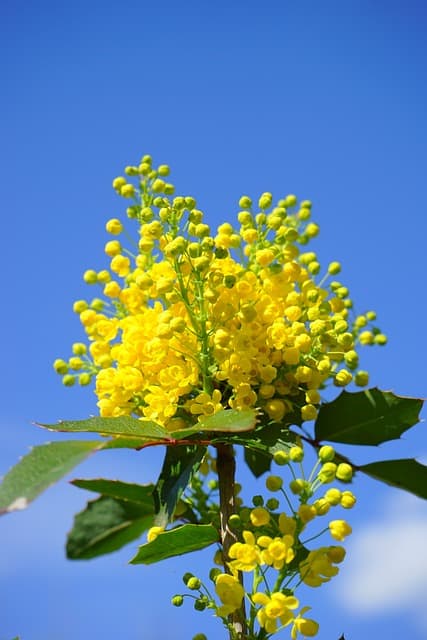
Mahonia, often referred to as Oregon Grape, is an evergreen shrub characterized by its holly-like foliage and clusters of yellow flowers in spring. The blooms are not only visually compelling but also fragrant and attractive to pollinators. Mahonia thrives in shady areas and well-drained, acidic soil, making it an excellent addition to woodland gardens or shaded borders. Its dark green, glossy leaves provide an appealing backdrop, while the blue-black berries that develop later are enjoyed by birds and add a charming element to your garden.
Meadowsweet

Filipendula ulmaria, commonly known as Meadowsweet, is a charming flowering shrub with delicate clusters of white to pale pink flowers that bloom in mid-summer. This perennial thrives in moist, well-drained soil and prefers full sun to partial shade, making it ideal for garden borders or naturalized areas. Meadowsweet attracts beneficial insects and offers a soft, romantic appeal to cottage gardens. Its lush green foliage provides texture alongside its fluffy flower clusters, ensuring a visually dynamic landscape.
Mountain Laurel

Kalmia latifolia, known as Mountain Laurel, is a stunning, evergreen shrub that showcases beautiful clusters of pink or white blossoms in late spring. Preferring acidic, well-drained soil, this native shrub is adaptable to a range of environments, thriving in both shade and sun. Mountain Laurel’s unique flower shapes and glossy evergreen leaves provide year-round interest, making it a perfect choice for naturalistic gardens or woodland plantings. With its beautiful blooms and resilience, Mountain Laurel can be a fantastic addition to your landscaping scheme.
Ninebark
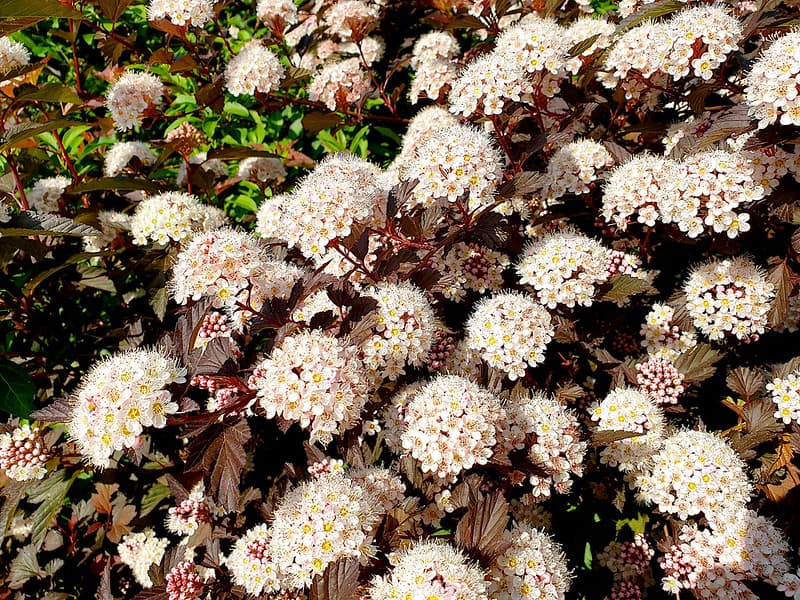
Physocarpus opulifolius, commonly known as Ninebark, is a robust deciduous shrub valued for its striking bark and colorful foliage. The name “Ninebark” comes from the multiple layers of its peeling bark, which expose rich colors beneath. Ninebark produces clusters of small, white to pink flowers in spring, creating a lovely display that attracts pollinators. Thriving in well-drained soil and full to partial sun, it’s adaptable to many conditions, including urban settings. Its dense, bushy growth makes it a popular choice for privacy screens or informal hedges, while its vibrant summer foliage deepens to shades of red or purple in the fall.
Philadelphus
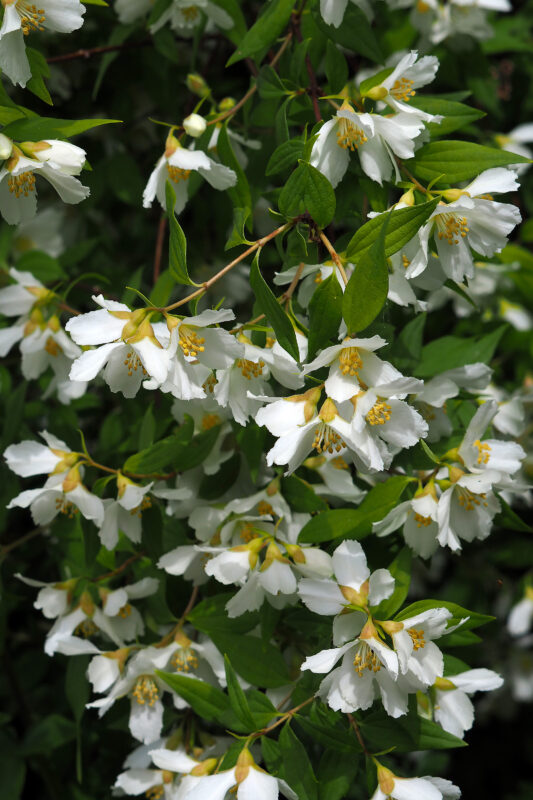
Philadelphus coronarius, known as Mock Orange, is cherished for its fragrant white flowers that bloom in late spring to early summer. The blooms resemble orange blossoms and emit a sweet, citrus-like fragrance that fills the garden. This deciduous shrub thrives in full sun and well-drained soil, making it ideal for borders, cottage gardens, or even as a hedge. Mock Orange is also relatively low-maintenance and boasts attractive green foliage, which adds interest even when not in bloom. Its captivating scent and lovely flowers make it a must-have for any garden that prioritizes fragrance.
Flowering Privet (Ligustrum)
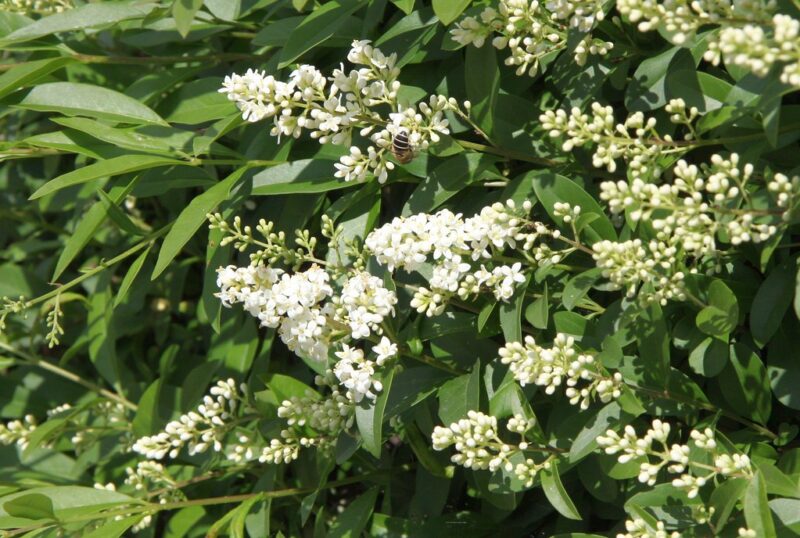
Ligustrum is a hardy, fast-growing shrub often used for creating formal hedges and screens due to its dense growth habit. Privet is valued for its glossy green leaves and small, fragrant white flowers that bloom in late spring to early summer, followed by small black berries. This adaptable shrub thrives in a variety of soil conditions and prefers full sun to partial shade. While many varieties of Privet can be susceptible to diseases, they are predominantly very tolerant and resilient. Regular trimming helps to maintain shape and encourages dense growth, making it a popular choice for privacy fences and structured landscapes.
Purple Flowering Raspberry
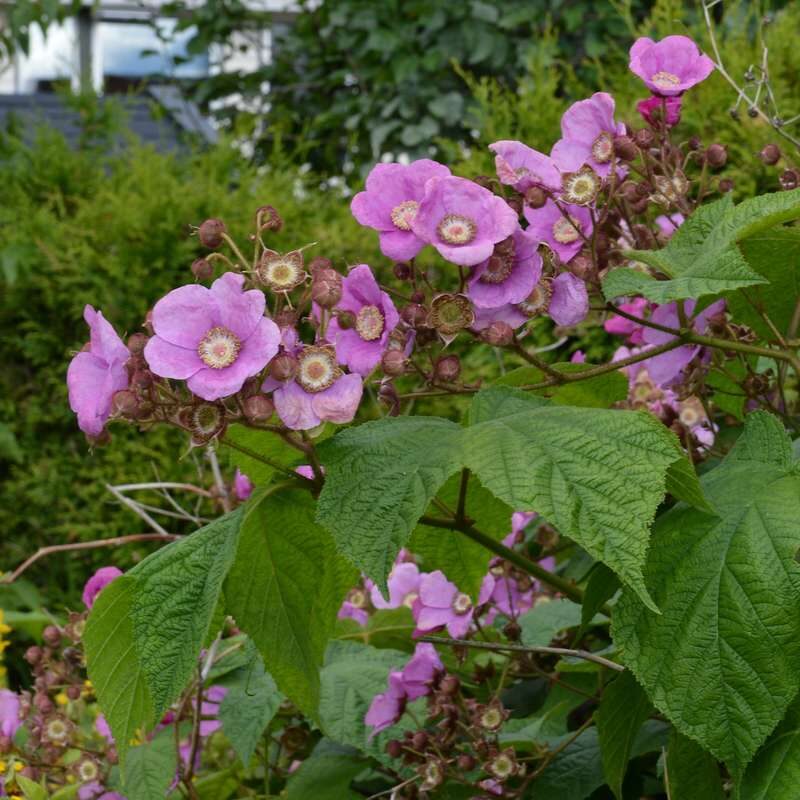
Rubus odoratus, often referred to as the Purple Flowering Raspberry, is a delightful deciduous shrub with large, showy purple flowers that bloom in early summer. The flowers not only beautify the landscape but also attract bees and butterflies, adding ecological charm. This shrub flourishes in well-drained soil and prefers partial shade to full sun. Its large, lobed leaves provide a lovely green backdrop throughout the summer, turning vibrant colors in the fall. This versatile plant is perfect for wildlife gardens or as a charming accent in mixed borders.
Pyracantha
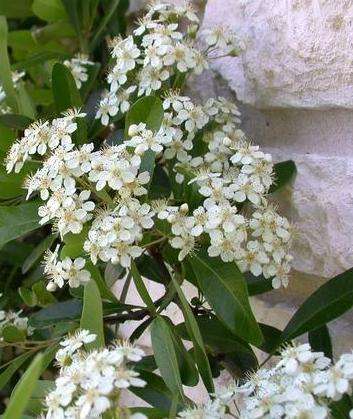
Pyracantha, or Firethorn, is a thorny shrub recognized for its brilliant orange and red berries that can last well into winter. Its small white flowers bloom in spring, attracting pollinators, while its dense growth habit makes it an excellent choice for security hedges or fencing. Pyracantha is highly tolerant of various soil types and can thrive in full sun or partial shade. Its ever-present berries not only add visual interest but also provide food for birds during the colder months. This unique shrub is a favorite for year-round landscape interest and privacy screening.
Rhododendron

Rhododendrons are celebrated flowering shrubs or small trees known for their stunning clusters of large flowers in a multitude of colors, including white, pink, red, purple, and yellow. Preferring acidic soil, these evergreen and deciduous species thrive in partial shade to full sun. Rhododendrons create spectacular spring displays, capturing the attention of passersby and garden enthusiasts alike. They are perfect for adding dramatic color to woodland gardens, borders, and larger mixed plantings. With proper care and placement, these majestic shrubs can be a lasting centerpiece in any garden.
Rock Rose
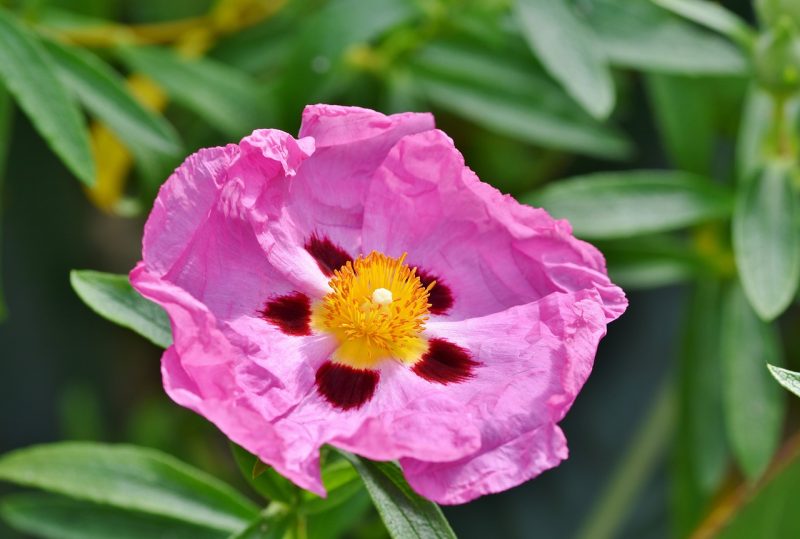
Cistus species, commonly known as Rock Rose, are woody shrubs that produce stunning, papery flowers in shades of white, pink, and purple through early summer. These drought-resistant plants thrive in poor, sandy soils and prefer full sun, making them perfect for xeriscaping or Mediterranean-style gardens. Rock Rose’s minimal care requirements and ability to withstand dry conditions make it a great addition to low-maintenance gardens. The delicate blooms and aromatic foliage provide a charming feature, enhancing the aesthetics of any outdoor space.
Flowering Rosemary
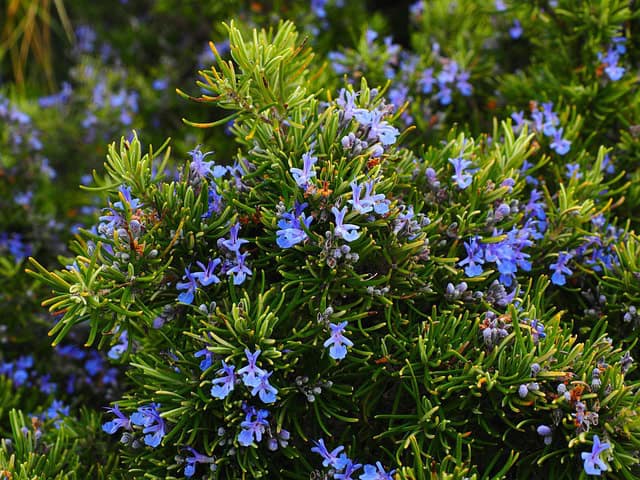
Rosmarinus officinalis, or Rosemary, is a fragrant evergreen herb that also serves as an attractive flowering shrub. Known for its aromatic leaves and beautiful blue flowers that bloom in spring, Rosemary thrives in well-drained, sandy soil and full sun. This hardy shrub is revered not just for culinary uses, but also for its health benefits and decorative potential in herb gardens or borders. The lush green foliage provides a lovely backdrop for the blooms, creating a delightful sensory experience in your garden. It’s also an excellent choice for attracting beneficial insects and pollinators.
Rose of Sharon
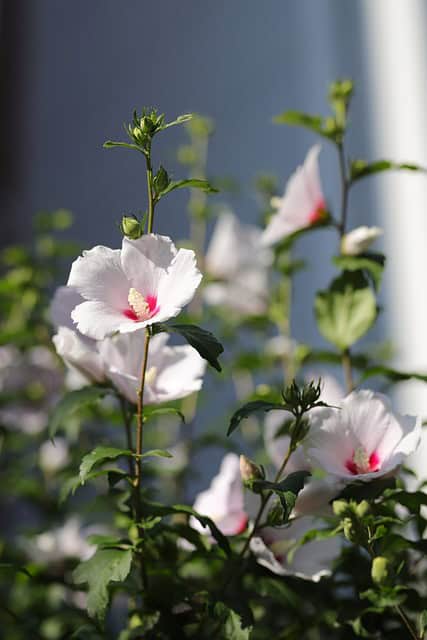
Hibiscus syriacus, commonly referred to as Rose of Sharon, boasts large, showy flowers that bloom from summer into fall, providing long-lasting color. With a wide range of colors, including whites, pinks, blues, and purples, this deciduous shrub can fill any garden with vibrant hues. Rose of Sharon thrives in well-drained soil and prefers full sun. Its hardy nature and ability to withstand heat make it ideal for sunny borders or foundation plantings. This shrub is also a great option for attracting butterflies, enhancing the beauty of any landscape.
Shrub Rose
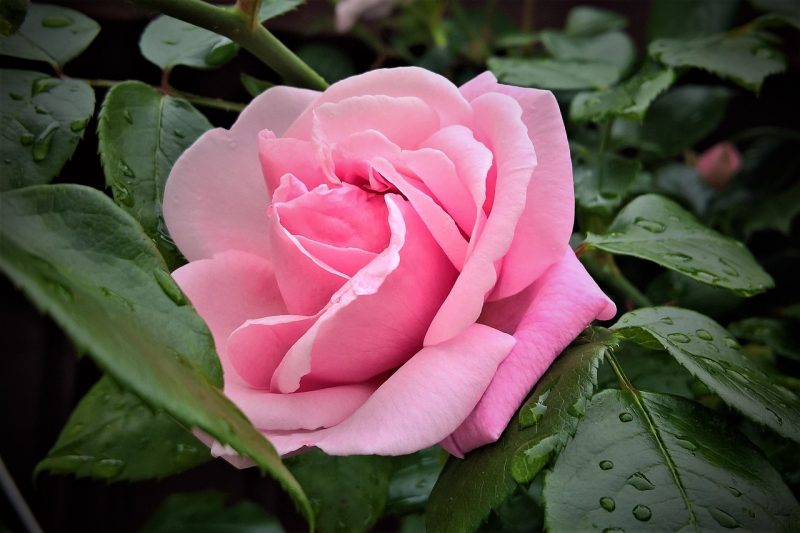
Shrub roses are a versatile and resilient group of flowering shrubs that offer an array of colors, fragrances, and flower forms. Known for their hardiness, these roses typically require minimal maintenance compared to traditional hybrid tea roses. Blooming continuously throughout summer and into fall, shrub roses bring dynamic color to the garden and are perfect for mixed borders, hedges, or as stand-alone specimens. Their glossy green foliage provides an attractive backdrop while attracting pollinators. With countless varieties available, there is an ideal shrub rose for virtually any garden style.
Smoke Bush
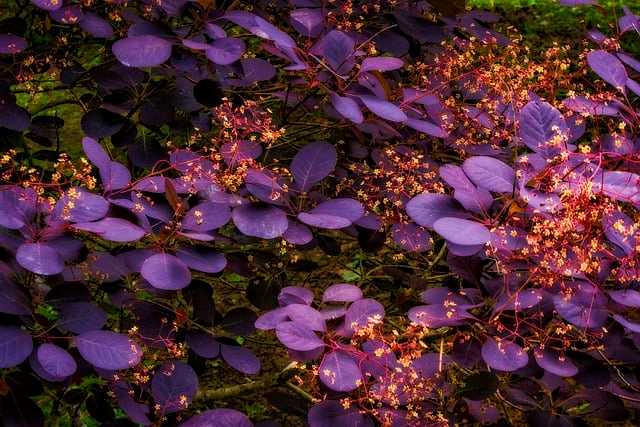
Cotinus coggygria, or Smoke Bush, is celebrated for its ethereal, fluffy flower clusters that bloom in late spring, resembling puffs of smoke. In addition to the unique blooms, its colorful foliage shifts through various hues, including deep reds, purples, and greens as the seasons change. Preferring full sun and well-drained soil, Smoke Bush thrives in a variety of garden situations, from ornamental borders to as isolated specimens. Its dramatic presence and unusual flower clusters add visual intrigue, making it a compelling choice for modern gardens and landscapes.
Spirea

Spiraea species are popular flowering shrubs that produce dense clusters of tiny, ornamental flowers in spring and summer. With many different varieties available, Spirea can bloom in various colors, including white, pink, and red, typically beloved by bees and butterflies. These deciduous shrubs thrive in well-drained soil and full sun, making them perfect for borders or mass plantings. Their compact growth habit and stunning seasonal blossoms make Spirea versatile for colorful garden designs, whether in cottage gardens, formal settings, or wildlife habitats.
Strawberry Tree (Arbutus unedo)
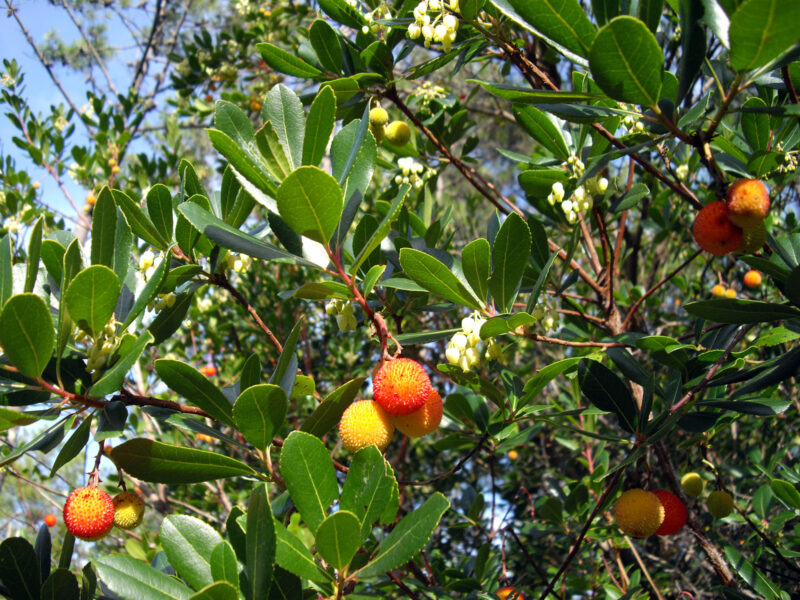
Arbutus unedo, or Strawberry Tree, is a unique evergreen shrub that produces both beautiful white flower clusters and edible strawberry-like fruits. These round, red fruits that appear in late summer and fall are not only visually appealing but also edible, making this shrub a tasty addition to your landscape. Strawberry Trees thrive in well-drained soil and prefer full sun to partial shade. Its attractive foliage and vibrant fruits create year-round interest, making it a wonderful choice for mixed borders, Mediterranean gardens, or as a specimen shrub.
Summersweet
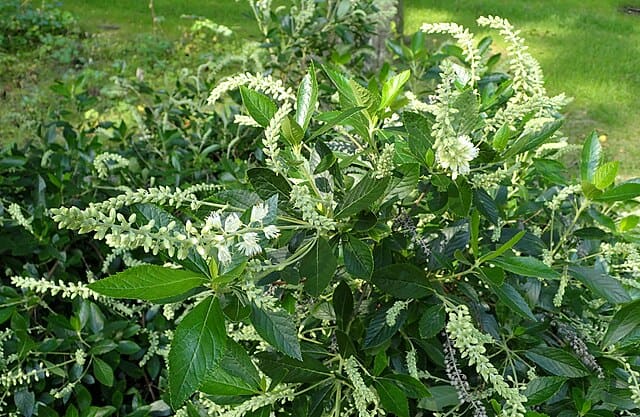
Clethra alnifolia, commonly called Summersweet, is a delightful deciduous shrub known for its fragrant white or pink flower spikes that bloom in mid to late summer. This shrub thrives in moist, well-drained soil and is particularly well-suited for shaded or partially shaded areas. Summersweet is highly attractive to pollinators, making it an essential addition to wildlife gardens. Its glossy green leaves turn yellow in the fall, creating seasonal interest, while the long-lasting flower spikes can elevate any garden design with rich fragrance and beauty.
Sweetshrub
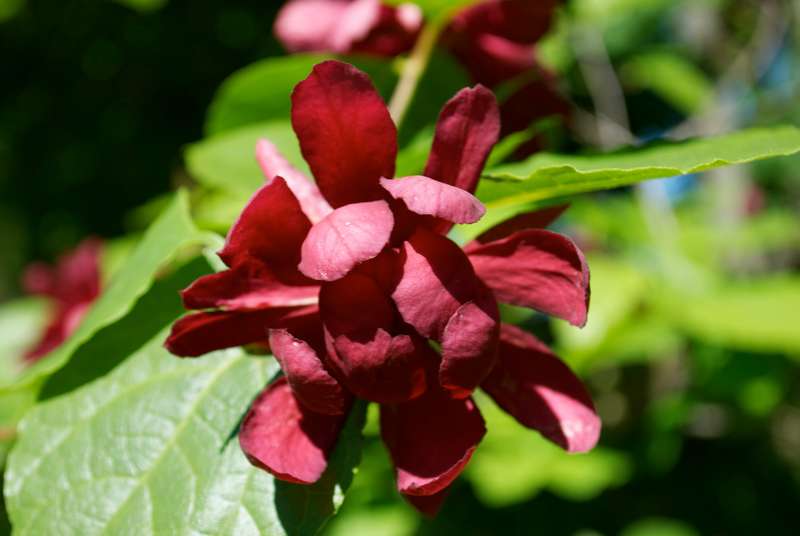
Calycanthus spp., better known as Sweetshrub or Carolina Allspice, presents an alluring scent similar to a mix of strawberries, banana, and spice, giving your garden an aromatic treat. Its unique, brownish-red flowers appear in late spring and can bloom sporadically throughout the summer. Sweetshrub prefers well-drained soil and partial shade, making it an excellent choice for woodland gardens. Its attractive foliage and delightful fragrance combined with striking blooms bring charm to any landscape, making it a favored choice for sensory gardens.
Vanhoutte Spirea
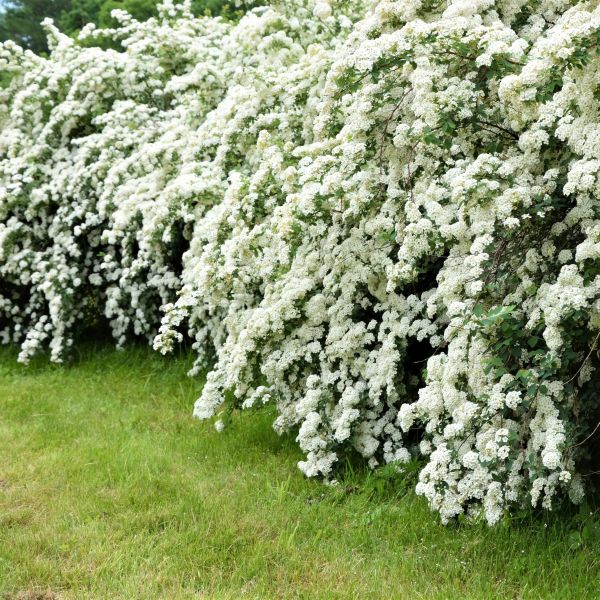
Spiraea x vanhouttei is a lovely hybrid shrub celebrated for its cascading growth habit and abundant clusters of white flowers in spring. Vanhoutte Spirea prefers full sun and is highly adaptable to various soil types, making it a versatile choice for many garden settings. Its graceful form and charming blooms make it ideal for borders, garden beds, or as a stand-alone specimen. After blooming, the foliage remains lush and vibrant throughout the growing season, providing a beautiful backdrop as other plants fade.
Viburnum
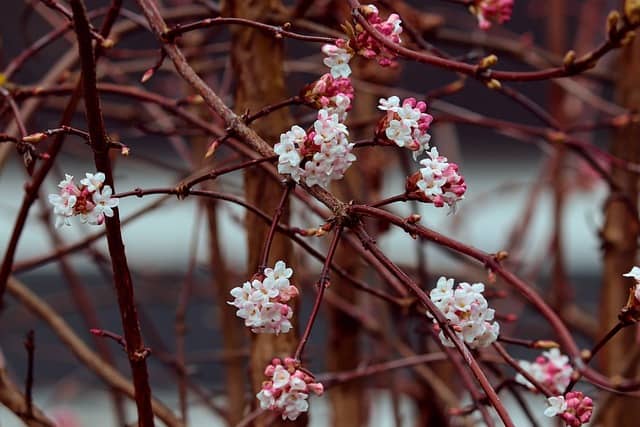
Viburnum is a diverse genus, offering various species that can enhance any landscape with their attractive foliage, flowers, and fruits. From the fragrant blooms of Viburnum carlesii (Korean Spice Viburnum) to the picturesque clusters of berries of Vibes obovatus, these shrubs are beloved for their versatility. Vibrant spring flowers yield colorful fall berries, attracting wildlife and providing multi-season interest. Viburnums thrive in various soil types and conditions, making them suitable for mixed borders, hedges, or as standout specimens.
Weigela
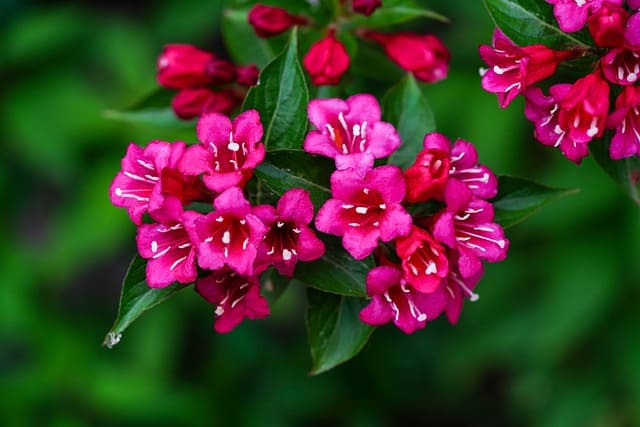
Weigela species are sought after for their vibrant, funnel-shaped flowers that bloom profusely in spring and continue to attract pollinators throughout the summer. Available in various colors, including pinks, reds, and whites, Weigela thrives in full sun to partial shade and prefers well-drained soil. Its compact growth makes it suitable for almost any garden setting, from foundation plantings to mixed borders. Additionally, the foliage of Weigela often turns striking colors in the fall, adding further appeal as seasons change.
White Oakleaf Hydrangea
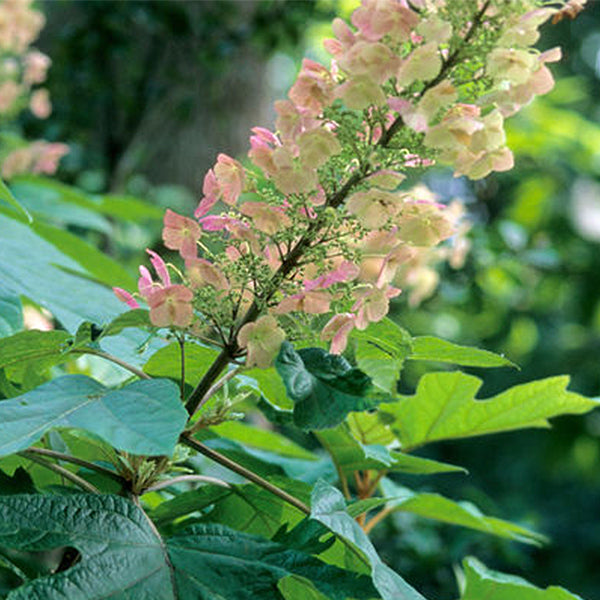
Hydrangea quercifolia, or White Oakleaf Hydrangea, is a distinctive deciduous shrub recognized for its handsome, oak-like leaves and stunning panicles of white flowers that age to deep pink in late summer. Thriving in well-drained, slightly acidic soil, this shrub prefers partial shade but can tolerate full sun in cooler climates. Its fall foliage showcases vibrant reddish and bronze hues, creating a stunning display as the season transitions. This unique hydrangea is ideal for woodland gardens, mixed borders, and as a stunning focal point, offering year-round visual interest.
Winter Jasmine
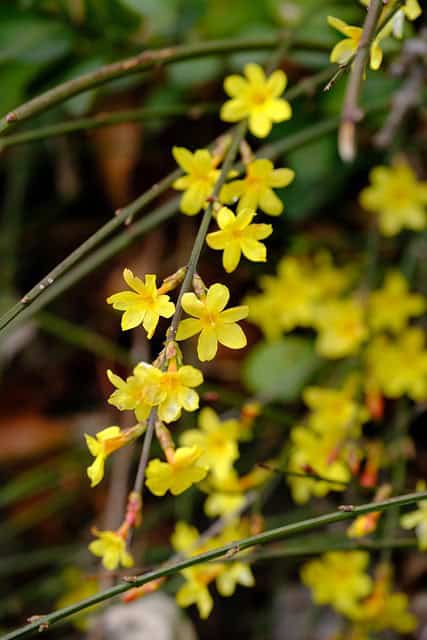
Jasminum nudiflorum, or Winter Jasmine, is a charming deciduous shrub that blooms bright yellow flowers in late winter to early spring, often before its leaves emerge. This shrub thrives in well-drained soil and prefers full sun, making it perfect for early color in the garden. Winter Jasmine is commonly used in borders, hedges, or as ground cover, bringing cheer during the colder months. Its flexibility, ability to grow on trellises, and ability to withstand harsh conditions make it a valuable asset for any landscape.
Witch Hazel
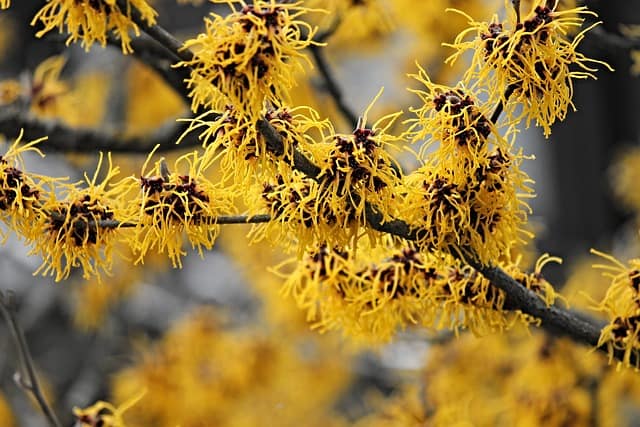
Hamamelis spp., or Witch Hazel, is a unique and visually striking flowering shrub renowned for its architectural branches and fragrant, spider-like flowers that bloom in late winter to early spring. With colors ranging from yellow to reddish-orange, the flowers provide a stunning contrast against the bare branches. Witch Hazel prefers well-drained soil and thrives in full sun to partial shade, making it a versatile choice for various garden settings. Its unusual blooming period, coupled with its attractive, crinkled foliage, offers seasonal interest year-round. Additionally, the plant’s ability to adapt to a range of soil conditions makes it suitable for both formal and informal landscapes. Witch Hazel is often used as a specimen plant or in naturalized areas, providing both beauty and environmental benefits, including attracting beneficial insects.




